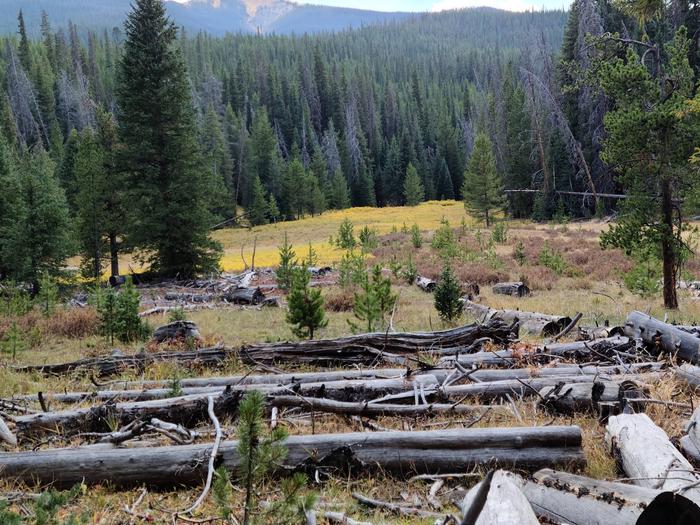Superior National Forest Christmas Tree Permit
A Christmas Tree permit allows you to cut a balsam fir tree within designated areas of the Superior National Forest. Lifelong memories are built during these special times and we are happy to help with any information gathering you'll need to make your trip to the Forest a safe and enjoyable one!
Additional information is available in the printable Holiday Greenery recreation opportunity guide.
Superior National Forest visitor maps may be purchased online from the USGS store or by phone or in-person at any of our Forest Service officeswhich are open Monday through Friday, October 1 - April 30. A digital version of the Forest visitor map is available from Avenza maps.
Please be sure to read and agree to all the tips and guidelines when selecting your tree.
Need to Know
Selecting Your Tree
Each forest has limitations on the size of the tree you can cut and the species of trees that are permitted. See below to help you measure and choose a tree that meets your permit's guidelines.
Balsam fir are preferred for harvest, white pine and cedar are not allowed.
Stump height: 12 inches maximum
Take the whole tree. Do not remove the top of the tree; cut down the entire tree
If snow is on the ground, remove it from around the stump so you can accurately measure the stump and tree height.
Make sure you are on National Forest System lands, but not within the Boundary Waters Canoe Area Wilderness
Where to Cut Your Tree
Do not cut on private land, in wilderness areas, designated campgrounds, or existing tree plantations.
Do not cut in active timber sales or areas that have been planted with new trees.
Christmas tree cutting in plantations, developed recreation areas or administration sites, and Research Natural Areas area is prohibited
Planning Your Trip
Helpful Cutting Tips
Carry your tree carefully out of the woods. Dragging the tree will rub off needles and bark.
If the tree is too big to transport inside of your vehicle, wrap it in canvas to prevent wind damage.
Once home, cut the bottom of the trunk off and place the freshly cut trunk in a bucket of water. Replenish water.
If storing your tree outside for a few days before putting it in the house, keep it in an area protected from the wind, such as the north or east side of your house or under a shaded tree.
Tools you might want to consider bringing with you include a measuring tape to ensure you select a tree that fits in your home; handsaw to cut your tree; gloves to protect your hands; boots to protect your feet; a tarp to sit on and/or to move your tree once it's cut; and rope or straps to secure your tree to your vehicle.
Choose a tree from a dense forested area, which will give the remaining trees more space to grow.
Cut the leftover branches from the stump and scatter them.
How to Plan Your Trip
Before you leave home, be sure to measure the space where you plan to place the tree in your home (height and width), and measure the space in your vehicle where you will be transporting the tree.
Cell service may be spotty or unavailable. Be sure someone knows where you are and when to expect you back. Check the latest weather conditions, forest warnings and road closures before you leave on your trip. Bring a map with you. Don’t rely on GPS because it may not be up-to-date with forest service roads. Dress warmly and take extra dry clothes. Expect winter weather, including cold temperatures, snow and winds. Bring plenty of food and water with you as well as an overnight survival kit in case you become stranded. Start your day early. Be sure to find your tree and leave the woods before dark.
We don't recommend bringing your pets but, if you do, they must be on a leash.
Roads may not be plowed. Carry tire chains, shovel(s) and a tow chain. Be sure your vehicle has a full tank of gas. Bring a spare key and give it to someone else in your party. Don’t get locked out of your car! Park in areas so that traffic can get by safely, and do not block gates.
